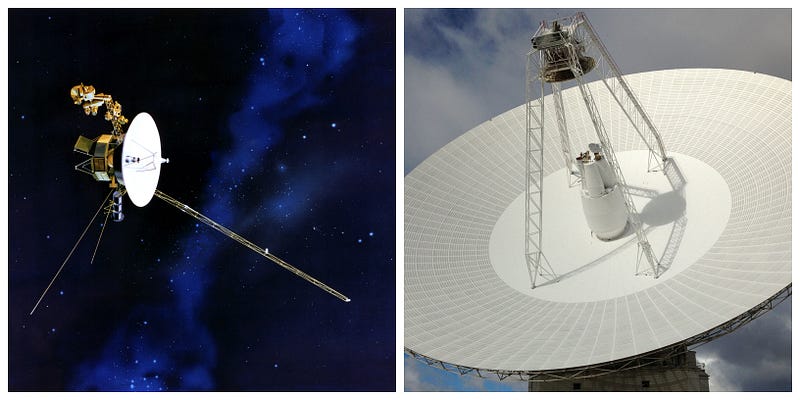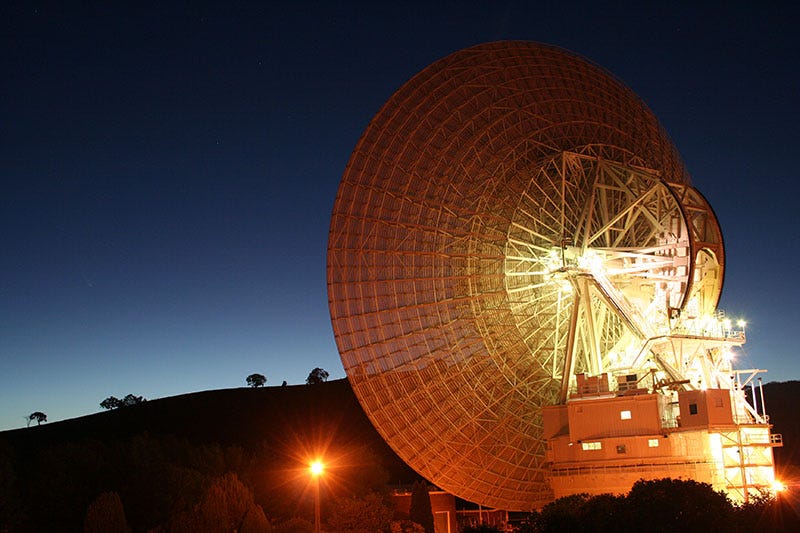Voyager 2 Reestablishes Communication with NASA After Months
Written on
Chapter 1: Reconnecting with Voyager 2
NASA has recently succeeded in re-establishing contact with the Voyager 2 spacecraft after several months of silence. This significant communication breakthrough was achieved using a newly upgraded radio telescope located in Australia.

The Voyager 2 spacecraft, which launched on August 20, 1977, is now traversing the outer realms of the Solar System. According to NASA, “On October 29, mission operators sent a series of commands to Voyager 2 for the first time since mid-March. The spacecraft had been operating independently as the 70-meter-wide (230-foot-wide) radio antenna for communication underwent repairs and upgrades. Voyager 2 successfully confirmed receipt of the commands and executed them without any issues.”
Section 1.1: The Role of DSS43
The Deep Space Station 43 (DSS43) radio telescope, situated near Canberra, Australia, is unique in its capability to transmit commands to this far-flung spacecraft. Despite the communication gap, other radio telescopes managed to collect scientific and health data from Voyager 2 during this period.
This 70-meter-wide radio telescope, operational since 1972, stands as the only one of its size in the Southern Hemisphere.
Subsection 1.1.1: History of DSS43

“Deep Space Station 43 (DSS-43) was constructed between 1969 and 1973 as a 64-meter antenna, which was more than six times as sensitive as the original 26-meter antenna at the Complex. Thus, DSS-43 can maintain communication with spacecraft located at greater distances from Earth, even as signals weaken,” explains the Deep Space Network.
Section 1.2: Communication Challenges
Due to the trajectory Voyager 2 took while navigating the Solar System, it can only communicate through Southern Hemisphere radio telescopes.
“The spacecraft's flyby of Neptune in 1989 set it on a path below the ecliptic plane, leading it into interstellar space on November 5, 2018. To conserve power, engineers shut down nonessential instruments in 1998. Data from at least some of the six operational instruments should continue to be received until at least 2025,” notes NASA.
The first video titled "NASA Hears 'Heartbeat' Signal From Voyager 2 After Mistakenly Cutting Contact" explores the recent communication with Voyager 2, highlighting the significance of this moment after a long silence.
The second video titled "The Surprising Signal From Voyager 2 After Communication Breakdown" provides an insightful discussion on the unexpected signals received from Voyager 2 following the reestablishment of contact.
Chapter 2: Technological Advancements
In March, NASA initiated upgrades to the DSS43 telescope, including the installation of a new three-ton X-band frequency cone, requiring a lift of 20 stories. This enhancement was completed in May and has significantly improved the sensitivity for mission engineers.
With the telescope undergoing maintenance for eight months, communications with Voyager 2 were suspended. However, engineers successfully resumed contact with the remote robotic explorer.
Even at the speed of light, it takes signals 17 hours to reach the spacecraft and return. Engineers anticipate completing the DSS43 upgrades by February 2021.
Section 2.1: The Voyager Legacy
The 1970s marked the launch of four spacecraft designed for interstellar exploration: the Pioneer 10 and 11 missions, followed by Voyager 1 and 2. Three of these spacecraft are traveling in the same direction as the Sun's orbit around the galaxy, while Pioneer 10 is moving in the opposite direction.
“The untold want, by life and land ne’er granted, Now, Voyager, sail thou forth, to seek and find.” — Walt Whitman, Leaves of Grass
Voyager 2 holds the distinction of being the only spacecraft to have visited all four outer planets: Jupiter, Saturn, Uranus, and Neptune.
“A gravity assist at Neptune redirected Voyager 2 below the plane of the planets' orbits, leading it out of the Solar System,” explains NASA.
As of now, Voyager 2 is located over 18.7 billion kilometers (11.6 billion miles) from Earth, hurtling away from the center of the Solar System at speeds exceeding 60,000 kilometers per hour (37,300 MPH).
NASA will continue to monitor Voyager 2 and its counterpart until their batteries eventually deplete, leaving the resilient explorer adrift in the silent vastness of space.
James Maynard is the founder and publisher of The Cosmic Companion. Residing in Tucson, he enjoys life with his wife, Nicole, and their cat, Max.
Did you enjoy this article? Join us at The Cosmic Companion Network for our podcast, weekly video series, informative newsletter, news briefings on Amazon Alexa, and much more!